Days In The Wild - Big game Hunting podcast
John Stallone Interviews Hunting Pros to get inside hunting tips and tactics western big game hunting, bowhunting, mule deer, elk, whitetail deer and predator hunting. Formerly Interviews With The Hunting Masters
Episodes
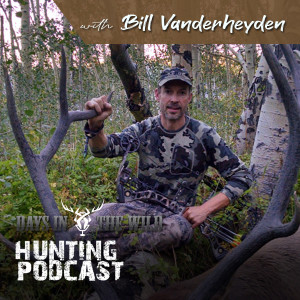
Monday Jan 10, 2022
Bowhunting Around the Country with Bill Vanderheyden aka Ironwill Bill
Monday Jan 10, 2022
Monday Jan 10, 2022
Bowhunting Around the Country with Bill Vanderheyden
Show Notes:
Bill Vanderheyden from Iron Will joins me today. He’s the owner, founder, and lead engineer for Iron Will Broadheads. Bill’s been bow hunting for 50 years, a mechanical engineer for 30, and designing broadheads for 17. Bow hunting is his passion – he goes out and tests his products and is always asking how he can apply science to make the best models. His new single bevel is something I’ve been using, and it’s been great.
Bill’s had some good hunts this year and went to Hawaii in June. A friend took him out on the Big Island, to hunt some sheep in the mountains. The terrain was mostly lava rocks and thick trees which made things tough, but he wound up getting a good shot on a ram. He also hunted areas off the coast in some hills where he spotted more rams, goats, and pigs. The older sheep were pretty wise and were onto him, but he shot a big wild hog in that spot.
In mid-August, Bill went Caribou hunting in Alaska, going after northwest Arctic herd. They flew out 160 miles from the nearest village, where the true wilderness is. Last year, him and his crew got their bulls early and were pulled out. This year, he took his time so he could spend the whole ten days. Bill also drew a tag in Wyoming. When he went, conditions weren’t great, it was crazy warm. On his seventh day out, he found out where a bunch of elk were and got right in on first light. He wasn’t confident and the herd split, but then he worked his way back around them. He waited until the thermals were right and then a bull walked out about 30 yards in front, and he smoked it. Bill used a broadhead and got a double lung hit in the mid-body.
In North Texas, Bill’s friend has a ranch, and he spent some time elk hunting there. He also shot an 8-point in Indiana in November with his 4 brothers, sister-in-law, and son. They put down 5 bucks in 4 days! He also hunted in his hometown in Wisconsin and shot a nice heavy buck with good antler mass. Finally, he came back to Colorado for a mule deer tag.It’s possible to have great success with bow hunting, but no matter how many times you do it, you never feel like an expert. Sometimes it feels impossible and other times it seems easy. You always get a reality check when you expect to fill all your tags and wind up getting humbled. Make sure to check out Bill’s products on his website below.
What’s Inside:
My experience using Bill’s new single bevel.
Hunting stories from Bill’s trips to Hawaii and Alaska.
Bill’s elk hunt in Wyoming.
Bill’s trips shooting deer in North Texas, Indiana, and Colorado.
How Bill tested some of his products on wild hogs.
Mentioned in this episode:
Phoenix Shooting Bags save 20% with code johnstallone
Days In The Wild
JohnStallone.meIron Will Outfitters
Short Description:.
Bill “Iron Will” Vanderheyden is the founder of Iron Will Broadheads. He makes a great single bevel that I’ve been using. He’s got a ton of stories from hunts this year from Alaska to Hawaii and everywhere in between. He’s had some solid opportunities to test and develop his products and got some decent shots along the way.
Tags:
big game hunting, hunting tips, hunting guide, big buck hunting, hunting stories, elk hunting, archery hunting, broadheads, sheep hunting, single bevel
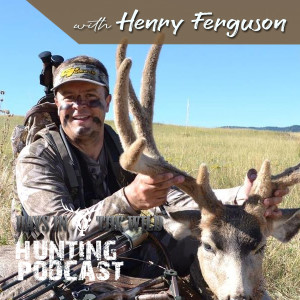
Monday Jan 03, 2022
Henry Ferguson
Monday Jan 03, 2022
Monday Jan 03, 2022
Deer Hunting Today with Henry Ferguson
Show Notes:
For a lot of people, deer hunting is just getting tougher, not easier. In this episode, I talk with big buck hunter Henry Ferguson about the challenges of deer hunting today. Henry’s got a great perspective on deer hunting, and we covered the whole gambit.
There are a whole lot of things affecting deer herds. Human population, weather, and loss of habitat are changing how we hunt. Even social media is putting its mark on today’s hunters. A lot of these things seem like they’re getting worse, not better. So what do we do?
Wildlife management is a good start. Everywhere’s different, but here in Arizona, we deal with a trickle rut, which is influenced by buck to doe ratio. I talk a bit about how that affects our herd numbers. Henry’s in Colorado, and he questions some of the wildlife management practices they’ve got going. The truth is, a lot of deer herds are declining and hunting is the only tool we’ve got to handle that.
“Everybody is hunting for different reasons,” says Henry. Every hunter has their own goals. That’s a good thing. It’s important to keep that in mind during the hunt. Henry shared some stories about how keeping that in mind helps us enjoy hunting more. People hunting differently means there’s less competition, and more success for everyone.
Henry’s a great hunter, and he knows his stuff. You can hear how much he cares about hunting, wildlife management, and how we can enjoy hunting more.
What’s Inside:
Social media and expectations can change how we take down bucks. It shouldn’t.
I talk about the trickle rut, what causes it, and how it impacts the herd.
A lot of deer herds are declining. This isn’t because of hunting, but hunting is the only tool we have to manage the herd.
Everyone hunts differently, but that helps more than it hurts.
Mentioned in this Episode:
Phoenix Shooting Bags Save 20% with code: johnstallone
Lacuesa Discount with code: johnstallone
Short Description:
Things are getting tougher for hunters – not easier. John talks with Henry Ferguson about the new challenges facing deer hunters, and how hunters can keep moving forward and keep enjoying the sport.
Tags:
Chronic wasting disease, social media and hunting, population control, changing hunting, mule deer, whitetail deer, deer hunting
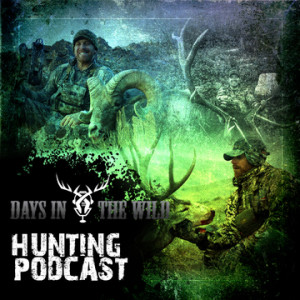
Sunday Dec 26, 2021
Arizona OTC Deer Hunt Q&A Mike Costello
Sunday Dec 26, 2021
Sunday Dec 26, 2021
This was an impromptu podcast Mike and I did on his drive to AZ. Mike reached out to me with some questions about hunting in arizona during the OTC archery deer hunt so we decided to record the conversation
Mike Costello Hunting Ain't Easy on Apple Podcasts
Spot And Ambush Hunting https://johnstallone.me/spot-and-stalk-hunting-for-the-not-sneaky/
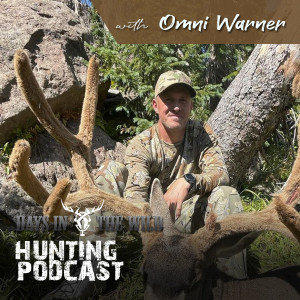
Monday Dec 20, 2021
Llamas, Elk Hunting, and Archery with Omni Warner
Monday Dec 20, 2021
Monday Dec 20, 2021
Llamas, Elk Hunting, and Archery with Omni Warner
Show Notes:
After spending most of my day on the computer waiting for a tag, I got to chat with Omni Warner. He shared some great stories from his season so far. During a hunting trip in Colorado, Omni rented llamas to get into a special area. The first day of that hunt was rainy so they didn’t get out until the second day. On that day, his brother wound up killing a good buck. The next day, they found a bigger buck hunting along a ridge line that was about 3 miles long.
Unfortunately, the next day their trailer broke down and they lost a day trying to get it repaired. They then went in on a different trailhead and glassed some bucks. They scouted some over the summer but couldn’t find them. During their last full day of hunting, they glassed up a buck in his morning bed and got him. Hunting in different states is always an adventure.
On a separate Elk hunt, Omni took his sons for their first archery experience. His goal was to see his sons kill a bull and his one son accomplished it on the first day. Their first morning, they got two bulls bugling and his son was able to take a textbook perfect shot at a bull that was about six to eight yards away! Omni’s wife also shoots a bow. Her bow is much lighter, and we get to talking about how you don’t need a heavy bow for a successful kill.
There’s so much diversity in what people shoot and all of them can work under the right setup and circumstances. It’s really all about shot placement. Accuracy, forgiveness, and sharpness of your broadhead are the three main factors. There are also a ton of transferable skills between shooting in a competition and shooting live game. The same confidence is required as well as the same way you calm your nerves, pick a spot to aim at, and set up your shot.
What’s Inside:
What it’s like to hunt and camp with llamas.
The advantages of hunting in different states.
Omni’s experience Elk hunting with his sons.
How aging affects your hunting game.
Shooting in competitions vs. shooting game.
Mentioned in this episode:
Phoenix Shooting Bags save 20% with code johnstallone
Days In The Wild
JohnStallone.me
Short Description:. Omni Warner has some great stories about his hunts so far this season. We talk about his experience hunting with llamas and a successful elk hunt with his sons. There are so many different ways to shoot a bow and similarities between shooting in a competition and a live hunt. It’s all in the setup and the circumstances and how much confidence you can bring to your game.
Tags:
big game hunting, hunting tips, hunting guide, big buck hunting, hunting stories, elk hunting, archery hunting, llamas, bugling
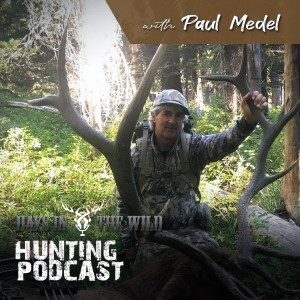
Monday Dec 13, 2021
Paul Medel AZ Elk Lessons Learned
Monday Dec 13, 2021
Monday Dec 13, 2021
Elk Season Recap with Paul Medel
Show Notes:
Elk hunter Paul Medel spent pretty much the entire season hunting elk, and he’s here with us today on the show to talk all about it.
We spent the first day of the season together, and Paul saw more elk that day than he’d see in a whole season back on his home turf in Idaho. The desert terrain threw him for a bit of a loop at first, though. In open areas like that, you might hear an elk bugle that sounds like it’s only 100 yards away, when it’s actually way further out. It took Paul a few days to really learn the rules of the land. “The elk are different in Arizona. The way they live, the way they react to things.”
Those bulls can be sneaky too! A big one managed to walk right up behind Paul’s son while he was raking, and he never even heard him. Paul watched without a shot as the bull checked out the noise, and turned and walked right back the way he came.
Paul also demonstrates and explains the three calls he used on the hunt. Remember, it’s not just about making good sounds, it’s about making the right sounds in the right situations. He was able to get a lot of responses out of the elk using those calls, and he goes into detail about calling tactics.
What’s Inside:
Arizona has a high concentration of elk.
Spend a few days learning the land when you hunt in a new area.
Bulls are sneaky! Keep your eyes peeled.
A demonstration of elk calls.
Mentioned in this episode:
Phoenix Shooting Bags save 20% with code johnstallone
Days In The Wild
elknut.com
Short Description:Elknut Paul Medel spent the season hunting elk, and he’s here today to recap the season. We talk elk behavior, the unique challenges of the Arizona landscape, how to cover a lot of ground while still having a good time, and more!
Tags:
big game hunting, hunting tips, hunting guide, elk, bull elk, big buck hunting, hunting stories, elk calls, cow calls

Monday Dec 06, 2021
Ironwill Bill Lessons Learned
Monday Dec 06, 2021
Monday Dec 06, 2021
Ironwill Bill Lessons Learned
Bill Vanderheyden, Co-Founder and Lead Engineer of Ironwill Broadheads shares with us stories of hunting elk.
#ElkHunting
#Broadheads
Iron Will Outfitters - High Quality Broadheads and Components for Bow Hunting
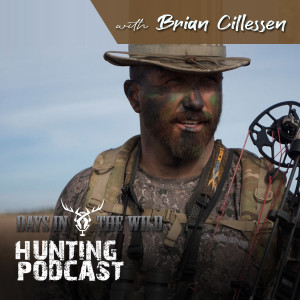
Monday Nov 29, 2021
Lessons Learned: Ibex Hunting with Brian Cillessen
Monday Nov 29, 2021
Monday Nov 29, 2021
Lessons Learned: Ibex Hunting with Brian Cillessen
Show Notes:
Today, I’m swapping stories and tips with Brian Cillessen, star of Beyond Rubicon. This episode is going to be a real mixed bag of good hunting info, so pull up a seat and get ready to hear some great stories!
Ibex are crazy animals. They’re like aliens. There’s something mesmerizing about the way they work a mountain. They’ll go up and down a cliff face like Spider-Man; one time when Brian spooked a group of them, he thought they’d jumped off a cliff into the void. But he walked over to the cliff face, and they were scurrying safely down the rocks.
Brian learned about the New Mexico mountains known as “The Rock.” It’s some seriously intense New Mexico bush, but you can’t let it get into your head. You have to respect the terrain, sure, but the moment you become afraid of it, it’ll become your worst nightmare for real. He encountered two rock slides back to back, but after spending some time and learning the mountains, he got a handle for the area.
Brian shares a success story that illustrates a great point: sometimes, you find success on the very last day of the hunt. He was in a situation where he was sick, the rest of the hunters had already packed up and left, and he was about to call it quits. But he decided that since he was halfway up the rock already, he might as well give it one last shot. And guess what? He spotted a herd of ibex, got into position, and bagged a billy that was hopping across the boulders below him.
We also talk bowhunting in the wind, Brian’s first kill with a bow, the thrill of scoring an Ibex for the first time, and more.
What’s Inside:
Ibex are spider-goats!
Be confident in harsh terrain: don’t let the bush get into your head.
Don’t let the wind work against the angle of your shot.
Sometimes, success comes at the very end of the hunt. Don’t give up!
Mentioned in this episode:
Phoenix Shooting Bags save 20% with code johnstallone
Days In The Wild
Short Description:Ibex are amazing creatures, like some crazy cross between a goat and Spider-Man. Brian Cillessen, star of Beyond Rubicon, is here with us today to talk about lessons learned hunting ibex in the New Mexico mountain region known as “The Rock.”
Tags:
big game hunting, hunting tips, hunting guide, ibex, goat hunting, mountain goats, new mexico mountains, beyond rubicon, bow hunting
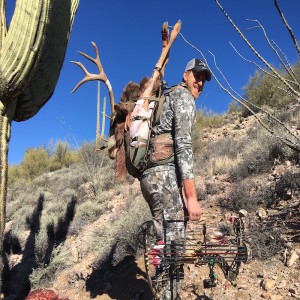
Thursday Nov 18, 2021
Are We losing The OTC archery Deer Hunts In AZ?
Thursday Nov 18, 2021
Thursday Nov 18, 2021
I speak with Brian Rimsza the Chairman of Bowhunting in Arizona and a board member of the Arizona Bowhunters Association about the possible changes to the OTC deer hunts here in AZ. It's very important for you to voice your opinion to the commission so that we don't lose our hunting privileges and we do what's necessary to maintain and healthy deer herd . Please share this episode and please take the time to reach out to the decision makers
Hello,
As the Chairman of Bowhunting in Arizona and a board member of the Arizona Bowhunters Association I have been working with the Department and the Commission for the past six months to develop a better alternative to the drastic closure of over 30 OTC archery deer hunts that was made in the spring of 2020 . I commend the Department and Commission for their willingness to bring me into this process and listen to my ideas. Based on these conversations the AZGFD is going to present their Hunt Guidelines proposal to the Commission on December 10, 2021. The Commission will choose one of these recommendations to utilize in the management of OTC archery deer for the next 5 years so, it is very important! The hunt guidelines establish the parameters in which the Department and Commission can make hunt recommendations.
The Department's three recommendations for OTC archery deer management are:
Maintain the status quo. Basically, keep doing it the same way we have been doing it. This will lead to more and more OTC hunts being moved to a draw and the eventual closure of all OTC hunts once they exceed 20% harvest and a great loss of revenue.
Utilize a harvest threshold system. This is the managment strategy I have been fighting for.
Move everything to a draw. (estimated loss of 1 million dollars in tag sales revenue)
You can watch the webcast using this link:AZGFD
AZGFD
Public Forum Webcast. The Arizona Game and Fish Department (AZGFD) will conduct the second of two webcasts from 6-7 p.m. Thursday, Oct. 28, to provide an update and gather public input on the review of the five-year game management hunt guidelines.
www.azgfd.com
I have included an additional breakdown of the potential for the threshold model that I propose below.
Threshold Model
Continue to issue OTC permits in the same manner we do now. Establish harvest objectives for each unit. These objectives will include an individual season objective along with an annual harvest objective. Utilizing a mandatory harvest reporting system similar to bears/lions requiring successful hunters to report their harvest via telephone, internet, or etag within 48 hours of harvest. Once the season harvest objective has been met in a unit close the season the following Wednesday at sundown. In addition to the harvest reporting, also utilize MANDATORY REPORTING to collect harvest data from unsuccessful hunters as well. This option would allow the department to reopen the units that were closed during the 2021 hunt recommendations process and return them to the OTC format.
Pro's
Reopen hunts that were closed last year
Accurate Harvest data
No loss of revenue
Active management during season, eliminating overharvest
Ability to evaluate non-resident harvest vs. resident harvest
Does not restrict non-resident participation
Con's
No restriction to non-resident tag sales
Currently there is a perception that non-resident participation/harvest should be restricted in the OTC deer hunts. At this time there is no data to support this claim although it is a strong perception from many. In 2020 non-residents accounted for 10.5% of the total OTC tags purchased, but we do not know what percentage of harvest occurred by non-residents vs residents.
After utilizing this system for a few years, we would have data to show if non-resident participation/harvest needs to be regulated.
Requires an Article 3 rule change for mandatory reporting
Mandatory Reporting
The department has fought the idea of mandatory reporting for years. To put things in perspective, the Department’s hunter questionnaires from the 2020 OTC archery deer hunt showed 814 deer were killed, yet their estimate for total OTC archery deer killed in 2020 was 3,654. This estimate was made with only 24% of hunters actually completing a hunter questionnaire. Additionally, I have included an attachment containing a study completed by AZGFD in 2019 on moving to mandatory reporting. When you read the report, you will see "All states indicated that mandatory reporting has worked well for them."
My suggested way to implement mandatory reporting would be to utilize the e-tag for those successful in the field as well as a paper tag. When you go to apply for elk and antelope in January the portal will prompt you to complete your mandatory hunter questionnaires. If you do not complete the questionnaire then you would not be allowed to apply for the draw. There would be no fine or penalty you simply could not apply for the draw without completing the mandatory report.
Take Action!!!!!!
It is more important more than ever that we present a unified position to the Commission. I realize there are many great ideas and ways to manage our wildlife, but these are the only recommendations that are currently being considered at the December 10 Commissioner’s meeting. These recommendation are what will be presented to the Commissioners on December 10th. I encourage everyone to send an email to the Hunt Guidelines email showing their support for two items.:
HARVEST THRESHOLD MODEL FOR MANAGING OTC DEER
MANDATORY REPORTING OF BOTH SUCCESSFUL AND NON-SUCCESSFUL HUNTERS
Please send your email before December 1st.
AZhuntguidelines@azgfd.gov
If you have additional questions, please call me or email me.
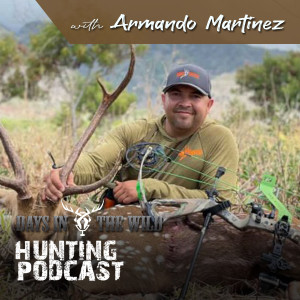
Monday Nov 15, 2021
Hunting in Hawaii with Armando Martinez
Monday Nov 15, 2021
Monday Nov 15, 2021
Hunting in Hawaii and The Bow Hitch with Armando Martinez
Show Notes:
Armando Martinez has a great product called The Bow Hitch. It’s a neat little device that makes carrying your bow suck less. He’s got a website and is on Facebook and Instagram, so check it out. The links are below.
Armando started up The Bow Hitch with a friend of his in Albuquerque, New Mexico where he was born and raised. Armando is a fireman by trade and is set to retire in about 10 months. He grew up hunting, and started doing work as a guide in New Mexico, which took his hunting to the next level. He’s got a great story about hunting in Hawaii, a place I’ve heard was wild but couldn’t wait to hear more.
While he was working as a guide, he met someone who lived in Hawaii and wound up inviting him out to hunt. Now, Hawaii is way different than the mainland when it comes to regulations. They do have game and fish and have seasons on some parts of the island, but most of the game lands are privately owned. On privately owned lands, they don’t have seasons, so the dates and weapon choices don’t matter. Some areas do draw tags, but Armando didn’t have to go through that for his trip.
On his first day out, Armando borrowed a custom rifle along with his bow after his guide suggested it. The animals in Hawaii are way more skittish, so a rifle would give him a better chance of shooting something to take back home with him. He went after a buck about 43 yards out but lost him. After 12 hours, he got pretty dehydrated from the heat and wind. The terrain on the islands is paradise, but it can be really rough.
The best part of the story is when Armando went to the airport to check in for his flight home and he realized he was a day early! He got an extra day of hunting to do, and he went out alone this time with his bow. In a grassy field, he came up on a bunch of deer and two bucks who were feeding and didn’t see him. It gets crazy from here on out. Armando wound up shooting the buck and then had to get some help to take it down. The buck kept getting back up and they would lose him in the grass, and at one point it charged at the other guy! It finally went down, and everyone lived to tell the tale.
What’s Inside:
What it’s like to hunt in Hawaii’s terrain.
Armando’s story of taking down a buck in the islands.
How hunting permits are different in Hawaii.
Information about The Bow Hitch.
Mentioned in this episode:
Phoenix Shooting Bags save 20% with code johnstallone
Days In The Wild
JohnStallone.me
Thebowhitch.com
The Bow Hitch on Facebook
The Bow Hitch on Instagram
Short Description:Armando Martinez is the co-founder of The Bow Hitch, a company with a device that makes carrying your bow suck less. He’s also got a wild story about hunting in Hawaii, which is way different than hunting on the mainland.
Tags:
big game hunting, hunting tips, hunting guide, big buck hunting, hunting stories, deer hunting, rifle hunting, archery hunting
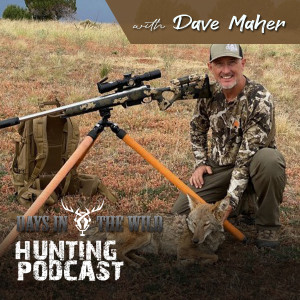
Monday Nov 08, 2021
Long Range Hunting Dave Maher
Monday Nov 08, 2021
Monday Nov 08, 2021
Long Range Hunting Dave Maher
Show Notes:
I don’t think anyone knows more about hunting rifles than competitive shooting expert Dave Maher. Today, he’s on the show to give us a deep dive into all things hunting rifles and hand loading.
Did you know that the barrel of your rifle vibrates harmonically when you fire a shot? The barrel is actually moving around rapidly while the bullet is traveling through it, and this affects your accuracy. Dave explains exactly how this works, and tells us how you can “tune” your ammunition so that it exits the barrel consistently.
Dave also gives an in-depth guide to developing and tuning a load for your particular rifle. Start by looking at what you’re trying to hunt. This will tell you your caliber and bullet grain. Then, it’s time to start tuning your powder load. The goal is to get to consistent, small groups, and it’s going to take some trial and error to get there.
We also talk about ballistic software, shooting positions, shooting in the wind, recoil management, and more!
What’s Inside:
What are barrel harmonics?
The ins and outs of developing a load.
What “miles per hour” is your rifle?
Practice in the wind.
Mentioned in this episode:
Phoenix Shooting Bags save 20% with code johnstallone
Days In The Wild
Short Description:No one knows rifles like competitive shooter Dave Maher. He’s here today to geek out about all things hunting rifles, including how to tune and develop your own hand load. Plus, a deep dive on the science of barrel harmonics, a case for the sitting shooting position, dealing with the wind, and more!
Tags:
big game hunting, hunting tips, hunting guide, hunting rifle, shooting tips, hand load, reloading, powder load










